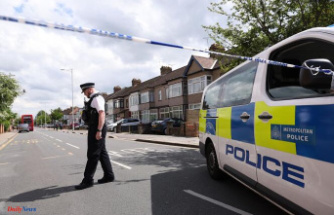A total of 31 provinces, plus the autonomous city of Melilla, will have this Sunday November 28 extreme risk (red warning), Important Risk (Navy Notice) and Risk (Yellow Warning) by Snow, Rain, Wind, Strong Swele, Drop it and Minimum temperatures, according to the State Meteorology Agency (AEMET) that expects the Borrasca Arwan to emphasize the temporary that affects almost the entire country.
Specifically, the red warning by snowfall will take place in Cantabria, Álava and Navarra, where up to 25 centimeters of snow thickness will be accumulated throughout the day from 600-800 meters. To a lesser extent, the snow will affect the orange level to Huesca and Zaragoza, with up to 20 centimeters thick in 24 hours from 1,000 meters; The Principality of Asturias with snowfall from 25 centimeters above 700 meters; To the rioja by accumulations of 30 centimeters above 500 meters and can reach, during the afternoon, 1,000 meters.
Likewise, Lérda will be on orange warning by 14-centimeter accumulations starting at 6:00 pm, as in Burgos, León, Palencia and Soria, where up to 37 centimeters of snow will accumulate. In addition, although in yellow warning, Lugo, Orense and Castellón will also have snowfall during the day and leave about ten centimeters thick.
The wave, on the other hand, will put an orange warning to Gerona by wind intervals of the Northwest Force eight, which will produce waves of four meters high. Also, Almería and Granada, during the afternoon, will have yellow notice by this phenomenon that will cause West Winds, and from Northwest in Granada, force seven.
In addition, Melilla, Alicante and Castellón will also have yellow notice by wave by the West West and Northwest Force Seven. In this sense, Asturias will also be in yellow warning by strong waves, due to the winds of Northwest Force seven that will cause waves of up to five meters high.
The situation will be similar in Mallorca, Menorca, Ibiza and Formentera, with West and Northwest Winds seven that will cause waves of three meters. Also, Cantabria, La Coruña, Lugo, Pontevedra, Murcia, Guipúzcoa and Vizcaya will have yellow notice by strong wave because of the northwest wind seven wind.
The winds will be strong in Granada, Almería, Huesca, Barcelona, Gerona, Lérida, Tarragona, Alicante, Castellón and Valencia, who will be this Sunday in yellow warning by strong raches that will be able to reach 80 km / h.
Also the rain will appear in Asturias, Cantabria, Navarra, Guipúzcoa and Vizcaya, which will have yellow notice by this phenomenon by accumulated rainfall of up to 40 liters per square meter in 12 hours. Finally, Burgos will suffer the melting of the snow harvested in the last days and Huesca will have minimum temperatures of up to less six degrees Celsius, so it will have yellow warning by cold.
In general, in the northern half the cloudy or covered skies will predominate, with rainfall that will be abundant in the north of Galicia, Cantabrian, Alto Ebro and western Pyrenees. Also, although of a weaker nature, it will rain in the rest of the peninsular northern third, central and Iberian systems. In addition, in areas of the South Plateau, Valencian Community and Balearic Islands will increase the cloudiness, with probable chubascos and storms. In the rest of the peninsula, the heavens will be little cloudy while in the Canary Islands there will be cloudy intervals likely to chubascos in the north of the most relief islands.
The snow level, in Pyrenees, surroundings of Navarra and north of Aragon and Catalonia, will be around 300-500 meters high, which will rise until 500-1,200 meters from West to East. Also, in the rest of the northern half of the peninsula, the snow level will turn around 400-600 meters but will tend to ascend at the evening at 900-1,400 meters in the east and in the center while in the west It will be between 1,400-1,600 meters.
On the other hand, in Balearices it will be between 800-900 meters but it will go down at the end of the day at 500-700 meters. The daytime temperatures will descend into Pyrenees, Balearic Islands and Southeast while nighttime temperatures will drop in the Balearic Islands and increase in Canaries. Also this Sunday there will be generalized frosts in a large part of the peninsular interior, more intense in mountain, mainly in Pyrenees, where they can be strong.
Finally, the day will have predominance of northwest and west winds in the peninsula and the Balearic Islands, with strong intervals on the coast of Galicia, Cantabrian, under Ebro, ampurdán, Baleares and Alborán. In addition, winds of westing will take place in the Strait Strong Rachas in mountain areas of the North and Southeast Half, in Canarias, the alisios will arise.
The Government of Navarra has insisted on its appeal to the prudence of drivers, especially if they have to circulate by mountain ports and roads of the northern half of the community, by persisting the extreme or important risk of snowfall with the possibility that it is They produce snow accumulations on the road.
AEMET keeps the red alert activated for the extreme risk that this Sundays occur in the center of Navarra with accumulation of up to 25 cm. of snow above 600 meters. In the Pyrenees, the warning is orange with significant risk of rainfall that can accumulate up to 35 cm. of snow above about 600-700 meters, being able to be achieved at altitudes greater than 900 meters and locally 40 cm. or more.
In the Cantabrian side there is also a significant risk of snowfalls with accumulation of up to 15 cm. Above the level of 500-600 meters. The Civil Protection Service has intensified the monitoring of the evolution of the temporal, which at the moment "has not produced significant incidents beyond the difficulties for circulating along the mountain roads," and SOS Navarra's services have also been strengthened and of Firefighters from Navarra.
During the past night, circulation has been "very scarce" and in recorded accidents, mostly paths and collisions with animals, there have been no injuries. He snows in the environment of the 400 meters, with greater intensity and continuity in the Pyrenean area and intermittently in the rest of the northern half of Navarra. During the early morning, the temporal has particularly affected the East Zone, the Foreral Executive has reported.
For all these reasons, the Government of Navarra recommends not circulating by mountain roads and advises drivers to extreme precautions in the rest of ways. It also indicates that it is convenient to consult the status of the road network on the web www.carreteras.navarra.es or on telephone 848423500.
It remains cut to traffic in Guipúzcoa the Leitzaran highway (A-15) by application of the Winter Road Protocol. Faced with this situation, the traffic of vehicles from Guipúzcoa with Navarre destination will not be able to access the Navarro section of the A-15 from Andoain, and must continue along the same way, A-1, until linking with highway A-10.
On the other hand, the traffic of heavy vehicles from Navarre with Guipúzcoa destination that circulate through the A-15 motorway will be intercepted at the Bestetegi link, where the driveway is placed for heavy vehicles, and will be returned by the same pathway from New to Navarra.
However, the regional traffic of LEKUNBERRI-GIPUZKOA light vehicles can be performed through local roads NA-1300 / GI-2135, and the regional traffic of leitza-gipuzkoa light vehicles through the local road GI-2130. The A-15 cut is signaled through the variable message panels located on the road network so that vehicles, especially heavy, can modify their itinerary by A-10 and A-1 towards Guipúzcoa.
Also in the North Access of Irurtzun, a traffic control device will be placed to divert heavy vehicles by these tracks. Do not register incidents in the rest of the main network.
In high school, roads NA-7510 (Access to San Miguel de Aralar) are closed to traffic from the PK. 3.5 (Baraibar); NA-2012 (four bordas-Irati) from the PK. 6, the chains being necessary since the beginning; The Na-137 (Burgui-Isaba-France) since the sale of Juan Pito (pk.47), specifying chains for circular from the PK. 33 (Isaba), and the NA-2011 (Salazar-France, port of Larrau), cut from the PK. 6 And with mandatory chains from the pk.0. In addition, chains or winter tires are necessary to circulate by NA-2000 (Isaba-Zuriza) from PK. 6; The Na-120 (Estella / Lizarra-Beasain) between the PK. 20 and 35 (lizarraga port); Na-1740 (Irurita-Eugi) among the PK. 10 and 23 (Artesiaga port); Na-176 (Garde-Anseó) among the PK. 0 and 13 (Port of Matamachos); Na-138 (Zubiri-France) from the PK. 11 (Urkiaga port); Na-2520 (Olagüe-Zubiri) from the PK. 5 (Egozkue port) and NA-214 (NavaS came-Burgui) between the PK. 0 and 15 (port of the crowns).
A total of 84 snowplow equipment are working to keep the roads cleared ..
Date Of Update: 28 November 2021, 05:27











